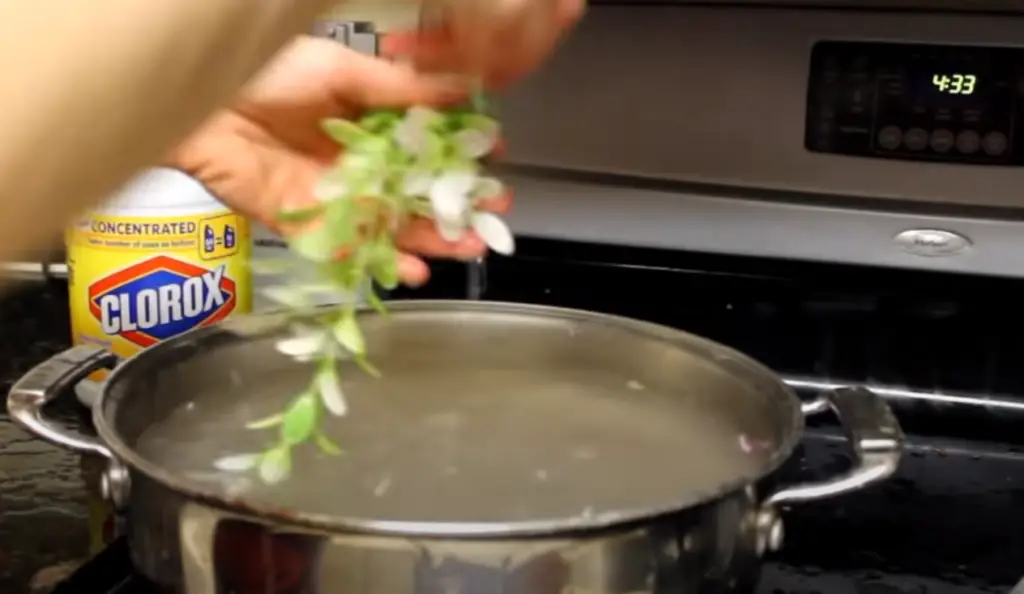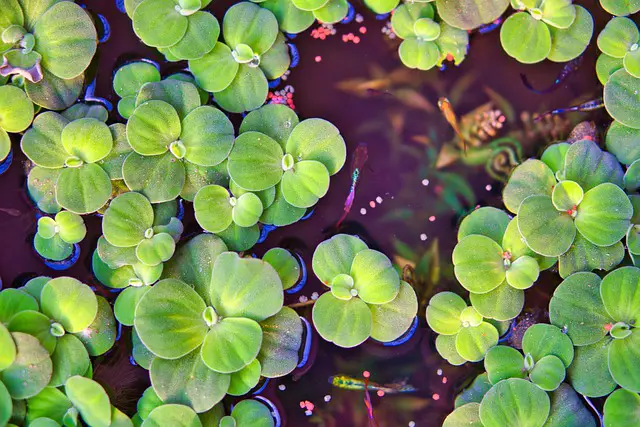Having an aquarium can be a wonderful experience that adds to your decor. The soothing sounds of water and watching fish can help calm anxiety, promote relaxation, and lower blood pressure. But just like any other pet, there is cleaning and maintenance involved in the care of your aquarium life. Knowing how to clean aquarium plants properly is essential for anyone looking for a healthy tank for their fish.
Aquarium Plants Need Cleaning Too
Not only will you have to clean the water your fish reside in every day, but the aquarium plants will also need cleaning too. Any item that sits in the tank with your fish will require cleaning due to algae build-up. From plants to decorations and even the rocks can require a good scrubbing from time to time in combating any out-of-control algae.

How you clean your aquarium plants will depend on the type of plants you have. Artificial plants are a common way to decorate your tank, but some individuals prefer live plants. Be sure to follow the cleaning instructions for your aquarium components, so you do not harm your fish or damage your plants in the process.
Cleaning Artificial Aquarium Plants
Cleaning fake plants can be easy to do and will not take much time. However, you must clean them entirely before reintroducing them back to the fish in the tank. You do not want your fish to develop fungi or other problems from an algae build-up in their aquarium.
Step 1: Remove the Plants
Be sure to wash your hands thoroughly before reaching into the tank for any items. You do not want to have dirt or debris coming in contact with the tank water and harming your fish.
Step 2: Place the Plants in a Bowl and Cover with Boiling water or a Cleaning Solution
Boiling water will kill any algae that reside on artificial aquarium plants, making them easier to clean. Use a large bowl to place the plants inside and cover them with boiling water. Let them soak for 10 minutes.
Vinegar Solution
When you have a build-up of calcium deposits, a vinegar solution may work best to clean your plastic plants as an alternative to chemicals. Mix half a cup of white vinegar with one gallon of distilled water and let the aquatic plants soak for five minutes before scrubbing them clean.
Bleach Solution
Some individuals may be leery of using a bleach mixture on their aquarium plants since it is a strong chemical. If it is mixed correctly with water, bleach can effectively take care of tough algae build-up on your plants, leaving them clean for the tank. Use 1-part bleach with 19-parts of water and soak your aquarium plants for 10 to 15 minutes. This ratio will measure out to 2 tablespoons of bleach for every gallon of water you use.
Scrub any algae from the plants and rinse before soaking in clean water for 10 minutes.
Step 3: Rub Off Excess Algae with Your Fingers or Cleaning Tools
Use your fingers to wipe off any excess algae from the plants. It should come off relatively easy after soaking in hot water. You can also use a clean rag or sponge or household items like a toothbrush, but remember that these items should be clean and free of debris.
Step 4: Rinse with Warm Water
Rinse off the aquarium plants with warm water to remove any residual algae or vinegar solution before placing them back into your tank. Although vinegar is not deadly to fish, you should avoid getting any in the water if possible.
Step 5: Let Air Dry
Let your plastic plants air dry before putting them back into the tank. This step will ensure that any residual bleach or vinegar is gone from your plants before placing them into the water again.
Cleaning Live Aquarium Plants or Delicate Silk Plants
Living freshwater aquarium plants or silk plants will need alternative cleaning methods to help preserve them and keep them viable for the tank. For example, you can damage them from excessive scrubbing or by using harmful aquarium chemicals for cleaning.

Method 1: Light Cleaning
If the aquarium algae build-up is not extreme, you can easily clean live or silk aquarium plants by rubbing them clean using your fingers or lightly scrub with an algae tool. Wash your hands thoroughly before using this method. Ensure that you have no dirt or debris on your skin or under your fingernails, and rinse thoroughly, so you do not introduce soap or cleansers into the tank water.
With this method, you will want to use an aquarium vacuum or a fine net to catch the algae and debris that you rub off the plants. This way, it does not settle into other areas of your tank and continue to create problems.
Method 2: Remove the Plants and Use Cleaning Tools
For deeper cleaning, you can remove the plants one at a time and scrub them lightly with a toothbrush or algae scrubber in a sink or bowl of clean water. However, removing all of the plants at once can create stress for the fish, so it is best to perform the cleaning one at a time.
You want to use a gentle but firm motion when scrubbing delicate plants with excessive build-up. If you are too rough, you can cause damage.
Method 3: Use a Bleach Bath
While it may not seem safe to use bleach on live or silk aquarium plants, it can be possible with proper care and attention. A bleach solution will help rid your aquarium vegetation of any tough algae or stubborn bacteria that you cannot rub off yourself.
Avoid scented bleach or gel products since those will not rinse off the plants and cause problems to the tank vegetation and the fish. Instead, mix one tablespoon of bleach with 1 gallon of water and soak your plants for a few minutes only. Depending on the thickness or health of the plant, you can immerse them for as little as two minutes or up to five minutes, but no longer.
After removing the plant from the bleach bath, let it soak in a bowl of fresh warm water for ten minutes to help remove any traces of bleach. Then, rinse the plant well before replacing it in your tank.
In Conclusion
Keeping your aquarium clean from algae will help keep your fish healthy and happy. Regular cleaning can prevent disease and fungi from plaguing your fish. In addition, by using proper cleaning methods, you can ensure that your aquarium plants are free from algae and debris so that you can enjoy your tank for a long time.






